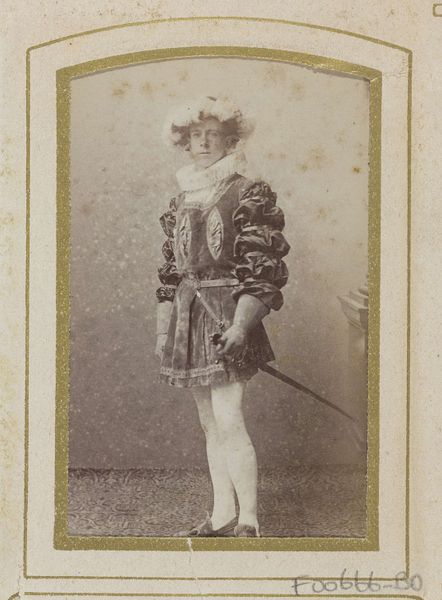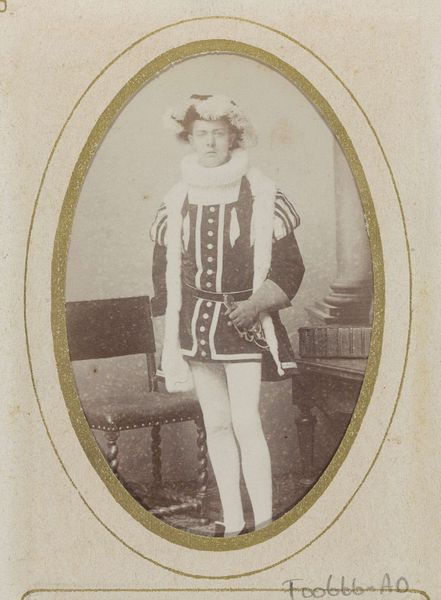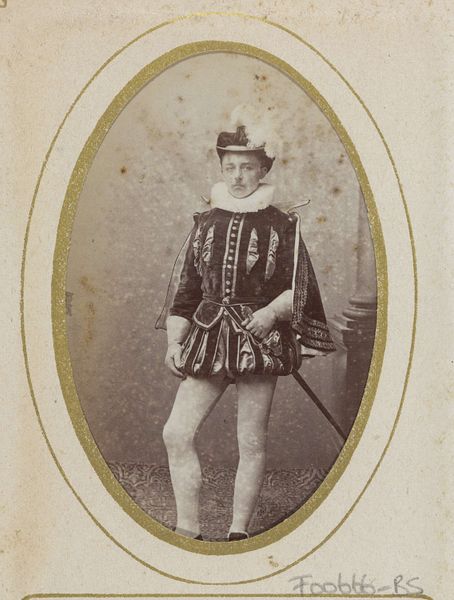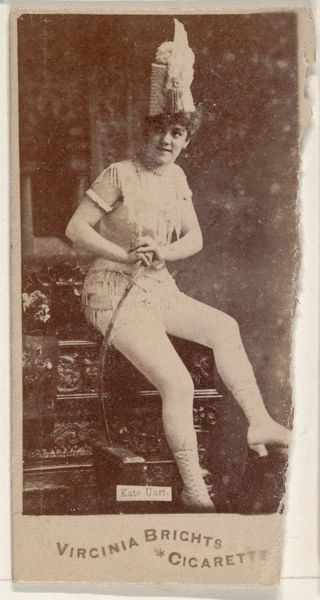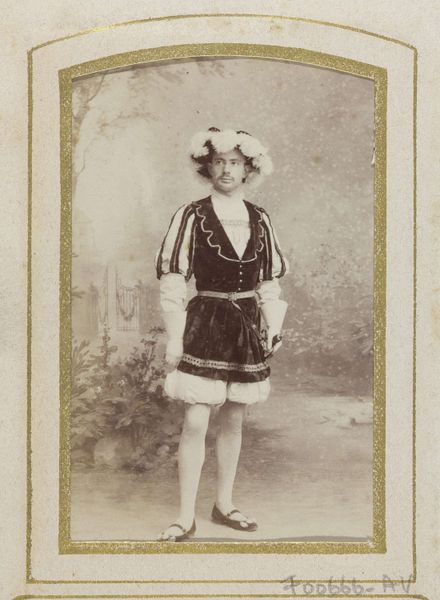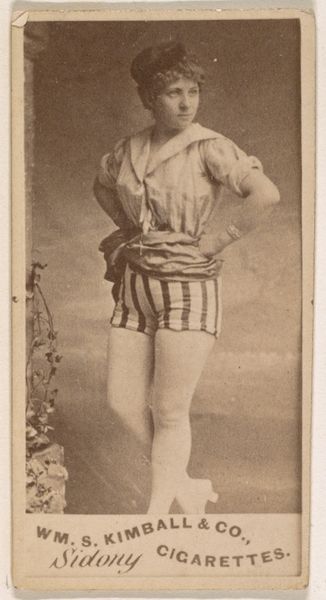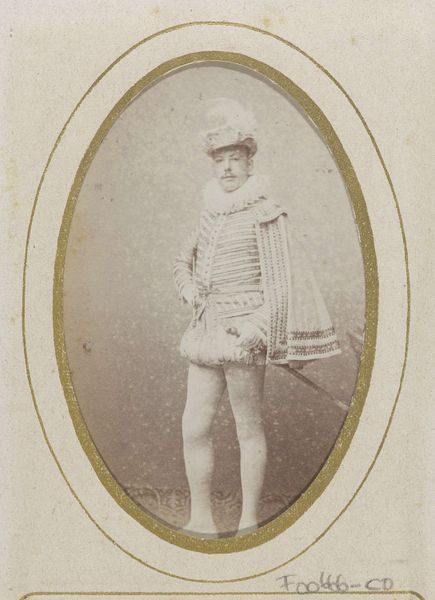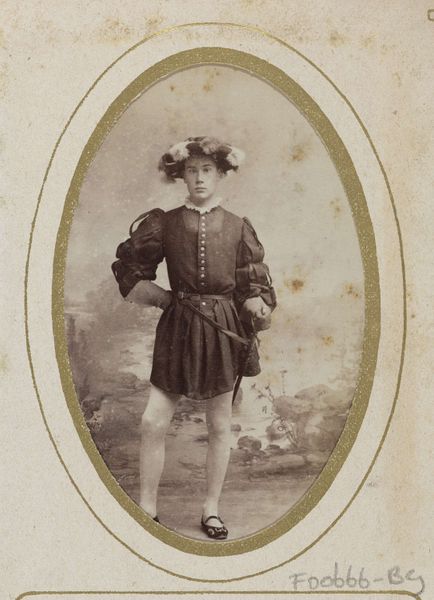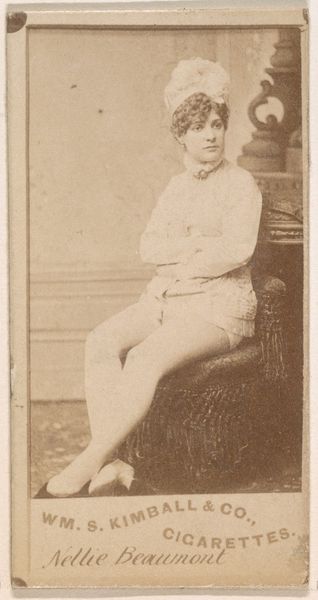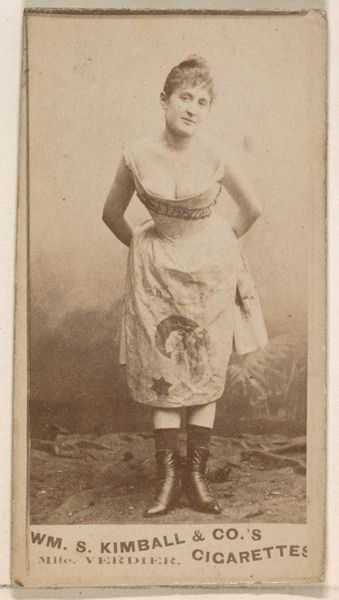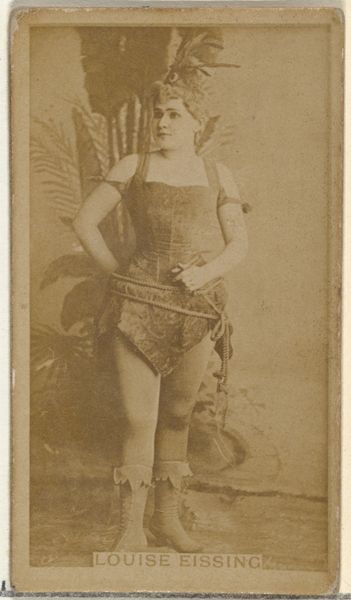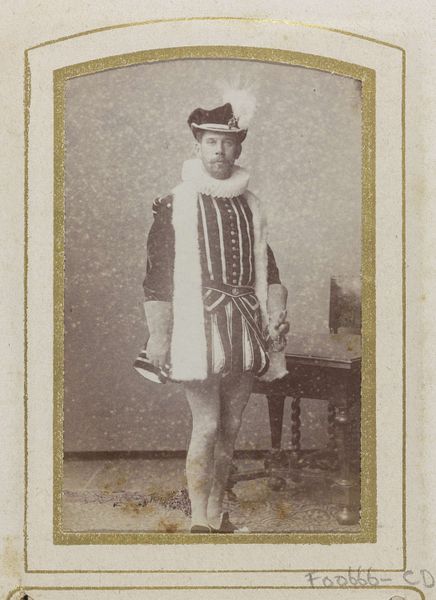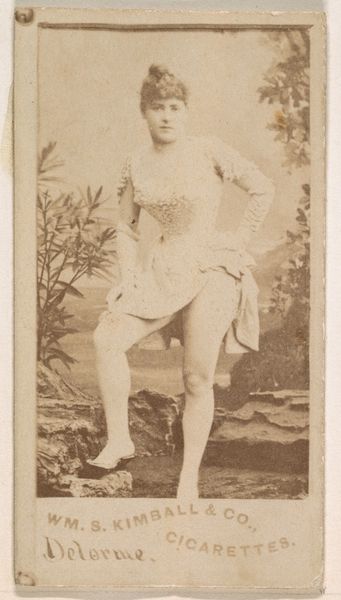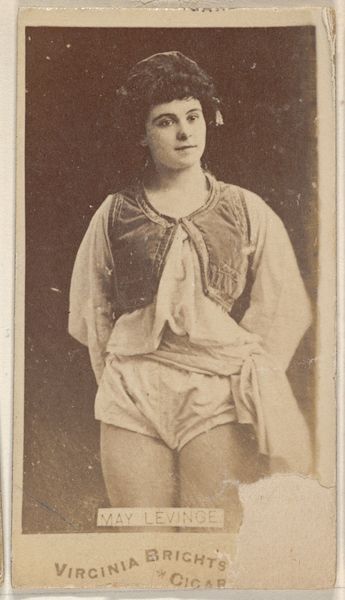
photogram, photography
#
portrait
#
photogram
#
photography
#
historical photography
#
19th century
#
genre-painting
#
realism
Dimensions: height 83 mm, width 52 mm
Copyright: Rijks Museum: Open Domain
Curator: What strikes me first about this image is the subject’s assertive pose—a hand firmly planted on a stack of books. The light etches his somewhat serious features against the stark whiteness of the ruff. Editor: Indeed. We’re looking at a photogram from the early 1880s titled "Portret van Lambertus Joannes Plemp van Duiveland in kostuum" by Jan Goedeljee. It is a rather compelling example of 19th-century photography. Curator: The composition is surprisingly complex. Note how the photographer uses an oval frame. The diagonal formed by his body pulls against the books that form their own horizontal line, and all held together within the oval. Editor: From a historical perspective, what interests me most is the choice of attire. The clothing appears to be period garb—perhaps intended to suggest a particular historical moment or profession, turning this into an early form of cosplay or genre-painting. Curator: Absolutely! There’s a clear performance of identity occurring. But look closely, the surface quality is what really distinguishes the work; the photogram rendering lends it a ghostly quality. Editor: Yes, the sepia tones certainly add a layer of melancholy and lend it a sense of otherworldliness, as though peering into a vanished era through a faded photograph—typical of its period. How might his family have regarded such an image? Curator: The textures are intriguing. Consider the way the light interacts with the folds of the ruff around the subject’s neck, a beautiful contrast to the flatter areas, almost vibrating on the surface. Editor: One also has to consider the broader impact and availability of such imagery, and its public role to display class, status, and respectability during an age where photography became increasingly ubiquitous and democratized as an artistic tool. Curator: Thinking about its lasting impact, it seems more a personal record preserved as artistic document with such visual complexity. Editor: Indeed. Viewing the photogram reminds us of photography’s unique ability to collapse time—the subject might be long gone, but we are able to have him stand before us once more.
Comments
No comments
Be the first to comment and join the conversation on the ultimate creative platform.
